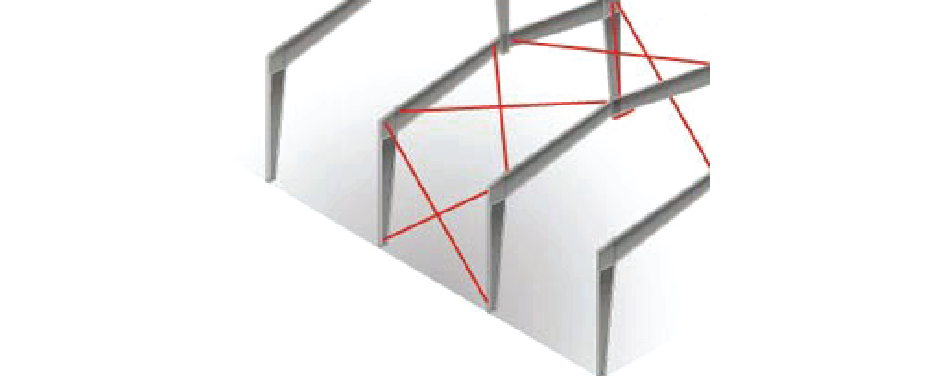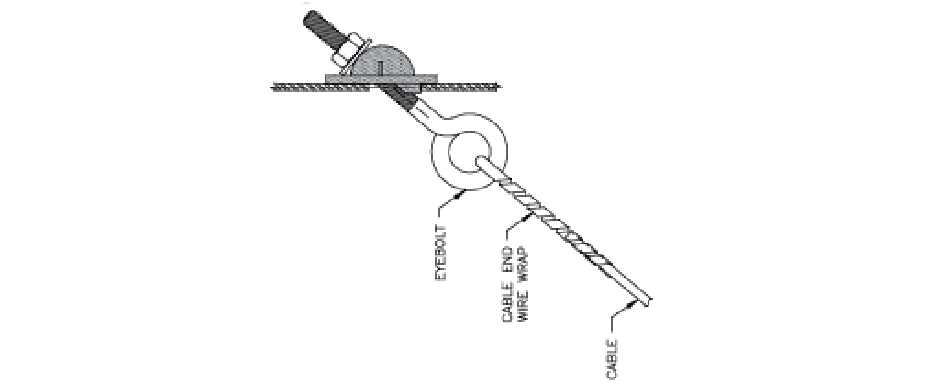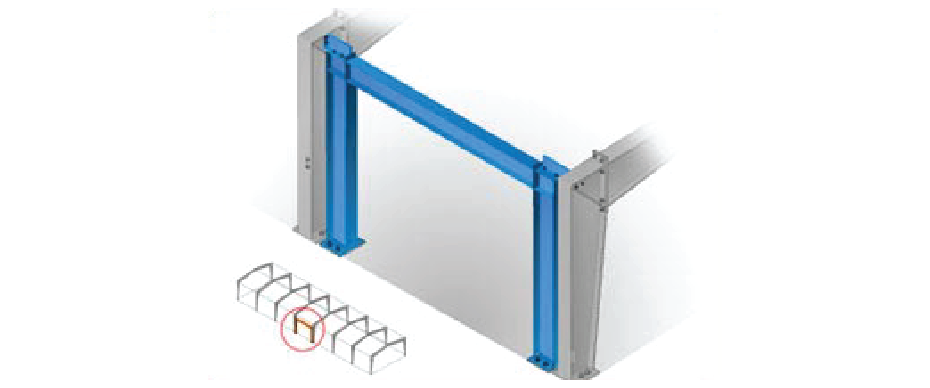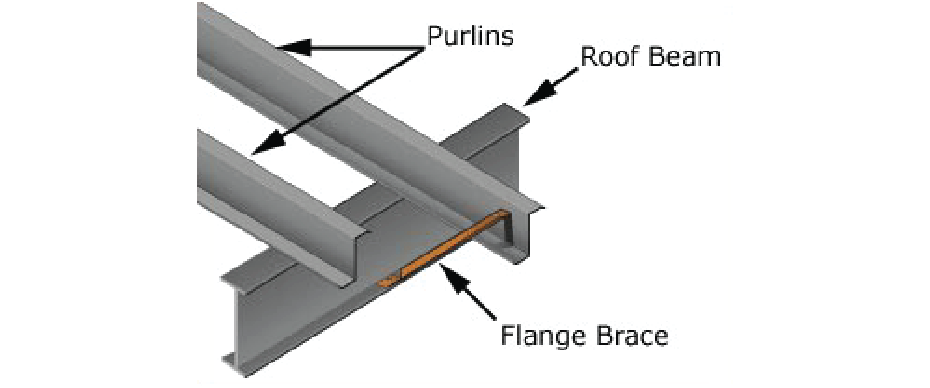
Rod bracing (also called X-bracing) is a tension-only bracing system. It may be located in the roof and walls of a building between frame members, transferring longitudinal forces to the foundation.

Cable bracing (like rod bracing) is a tension-only X-bracing system. It is one of the most efficient ways to transfer longitudinal loads to the foundation in smaller low-rise buildings; however it has application limitations due to capacity constraints for buildings with mezzanines, cranes, or in high seismic areas.

When bracing must occur in locations where doors or other accessories would interfere with rod-bracing, a portal frame may be used. A portal frame is comprised of two columns and a rafter made of built-up material and is attached to the web of the sidewall columns.

Flange braces are the structural members that attach purlins, girts, and eave struts to primary structural members (columns or rafters). They are used to prevent the main frame from twisting or buckling laterally under the load. Flange braces are an essential structural part and must be installed properly at all locations.